The document provides an introduction to the Apache Wicket framework. It discusses what Wicket is, its key features and architecture. Wicket allows building web applications using reusable Java components and separating presentation from logic. The document covers topics like the component model, state management, templates, and provides a basic "Hello World" example to demonstrate how components work.
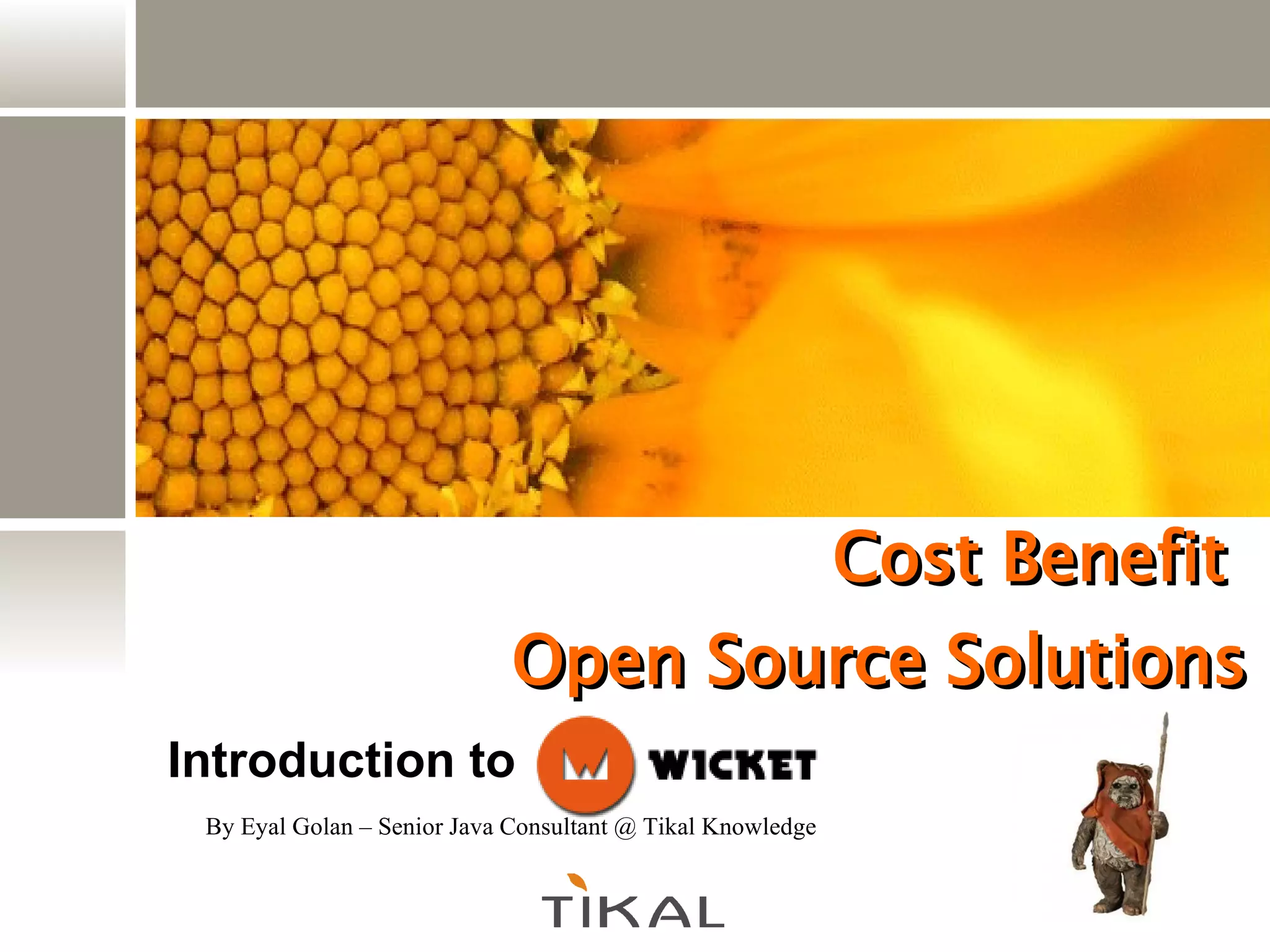
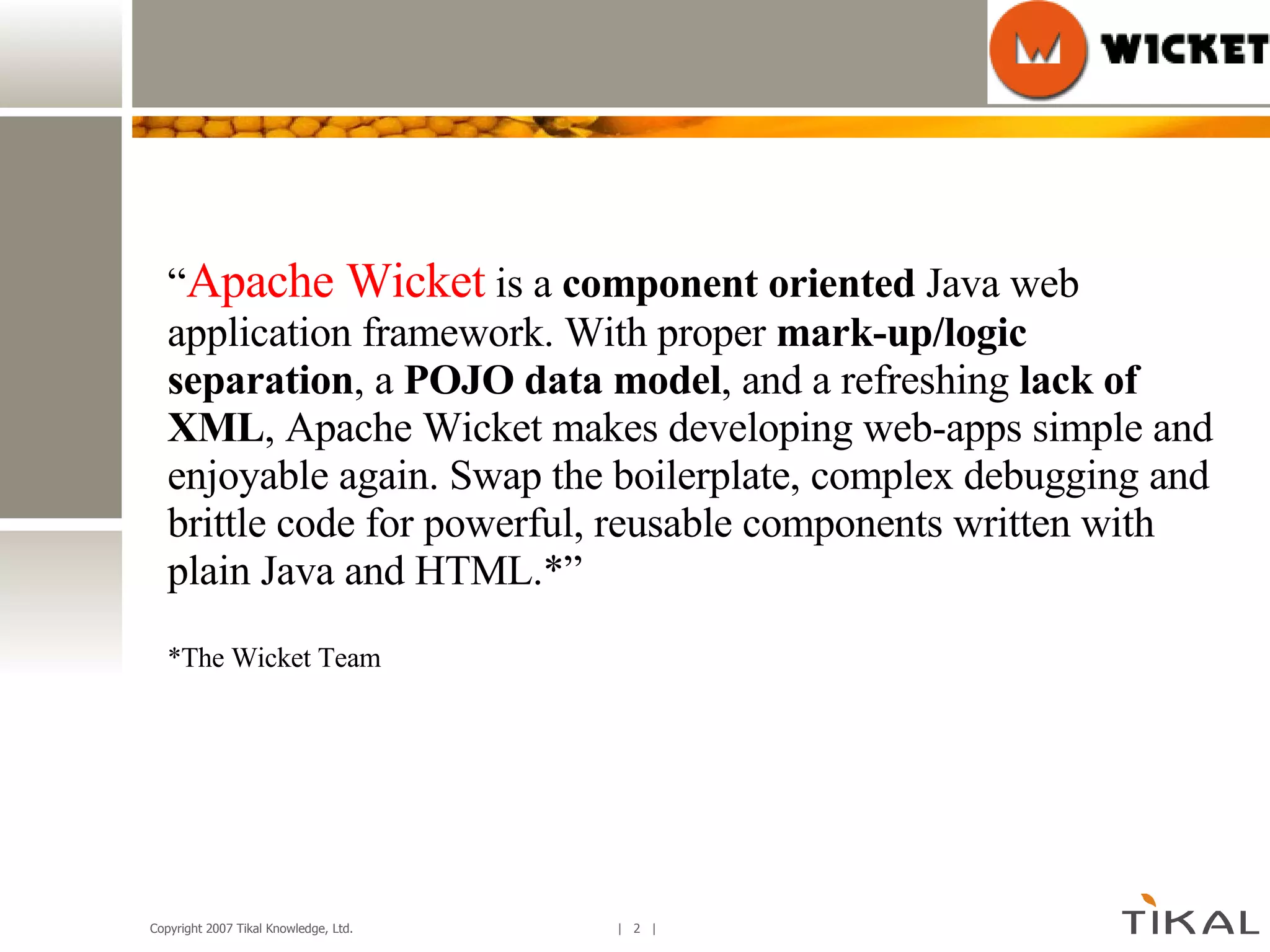
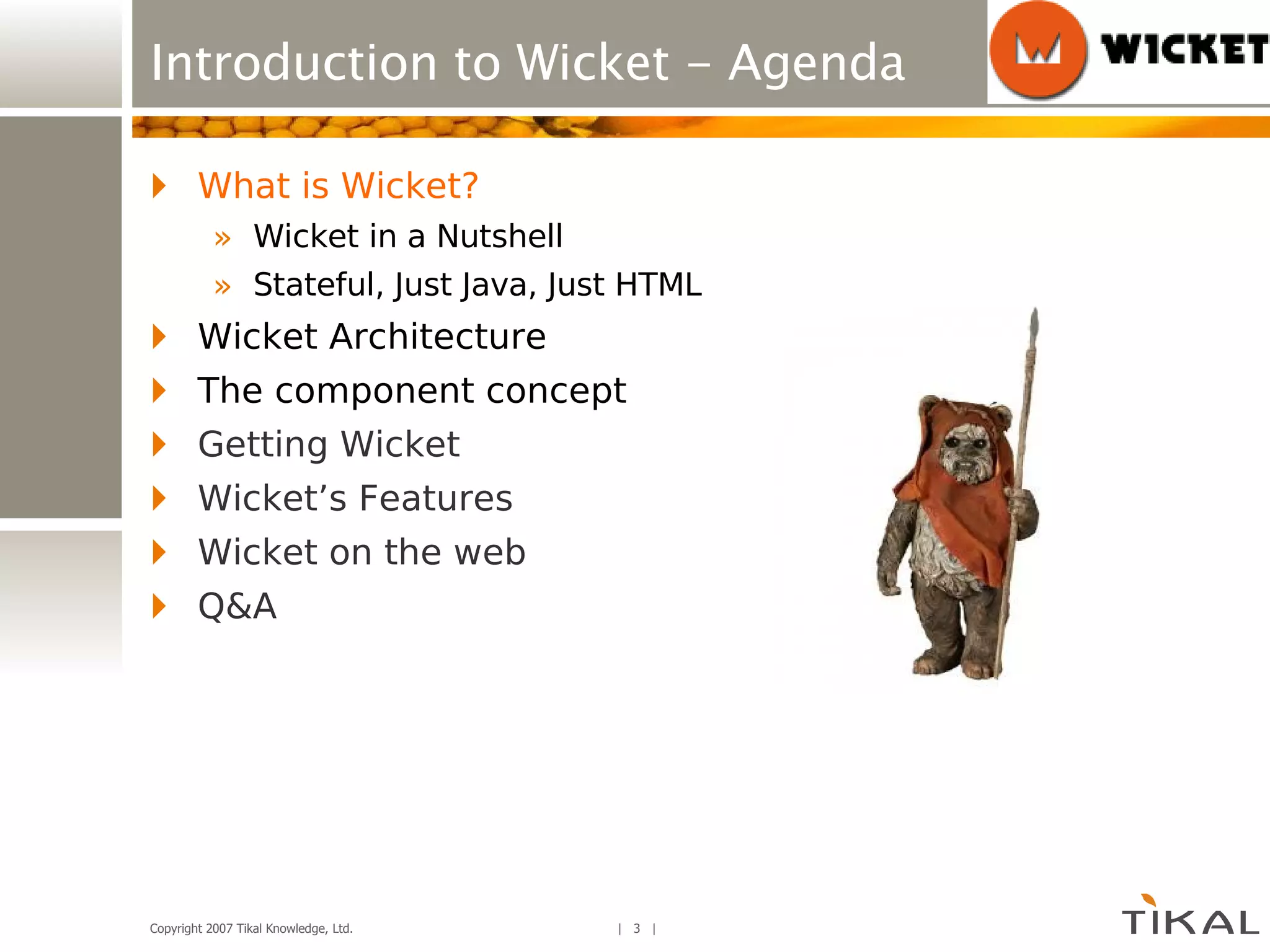
![Wicket in a Nutshell “ A Java software framework to enable component oriented, programmatic manipulation of markup.” (WIA) Manipulation of markup – Use Wicket to manipulate the markup tags and their contents. (<span>[content]</span>) Programmatic manipulation – Wicket forces a strict separation of presentation and logic. Java is used to derive the dynamic parts of the markup templates. Component Oriented – The application is constructed of reusable components. The components have their own states and behaviors. It is very similar to programming with Swing / SWT.](https://image.slidesharecdn.com/wicketintroduction-1214826136146339-9/75/Wicket-Introduction-4-2048.jpg)
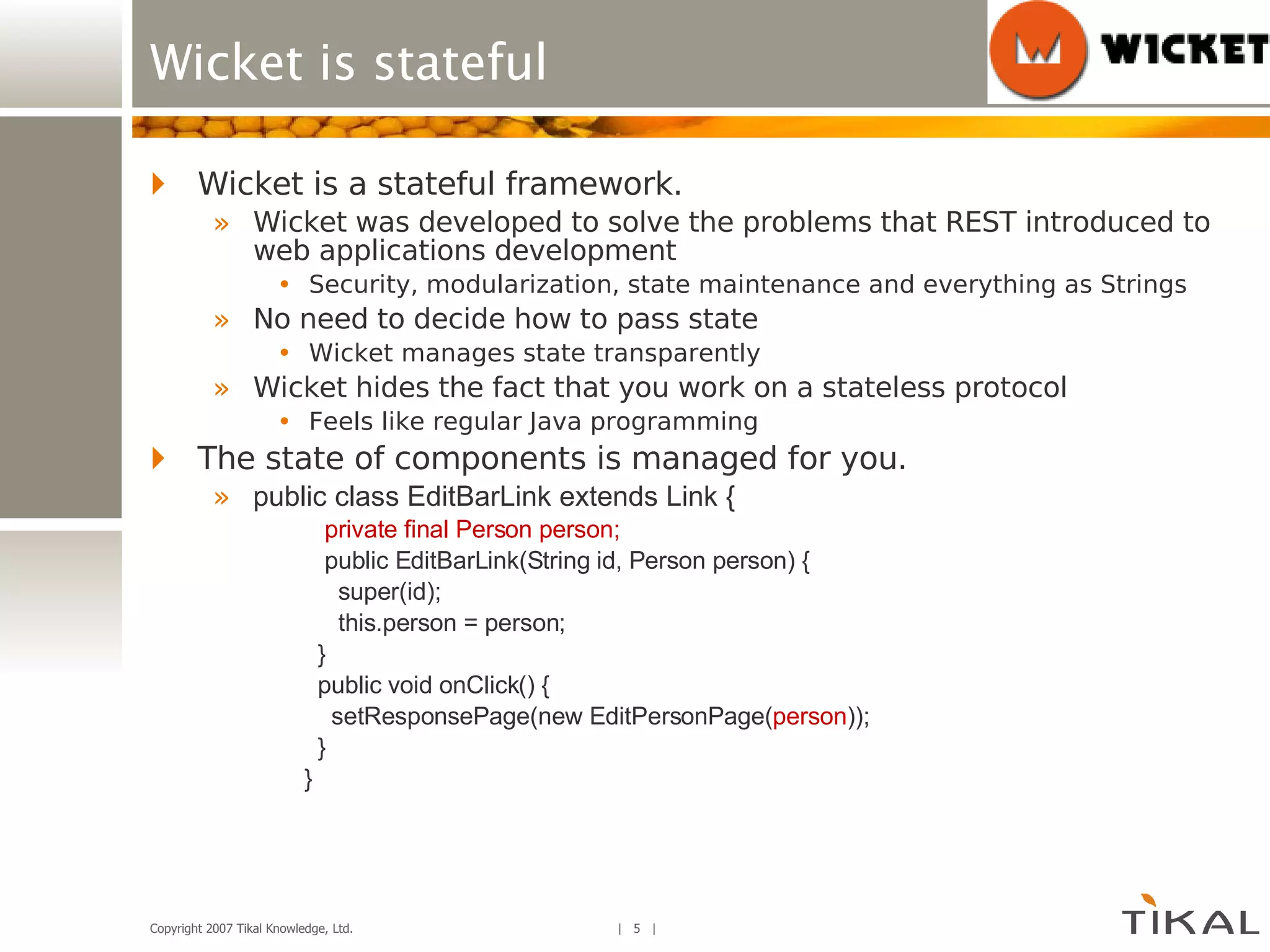

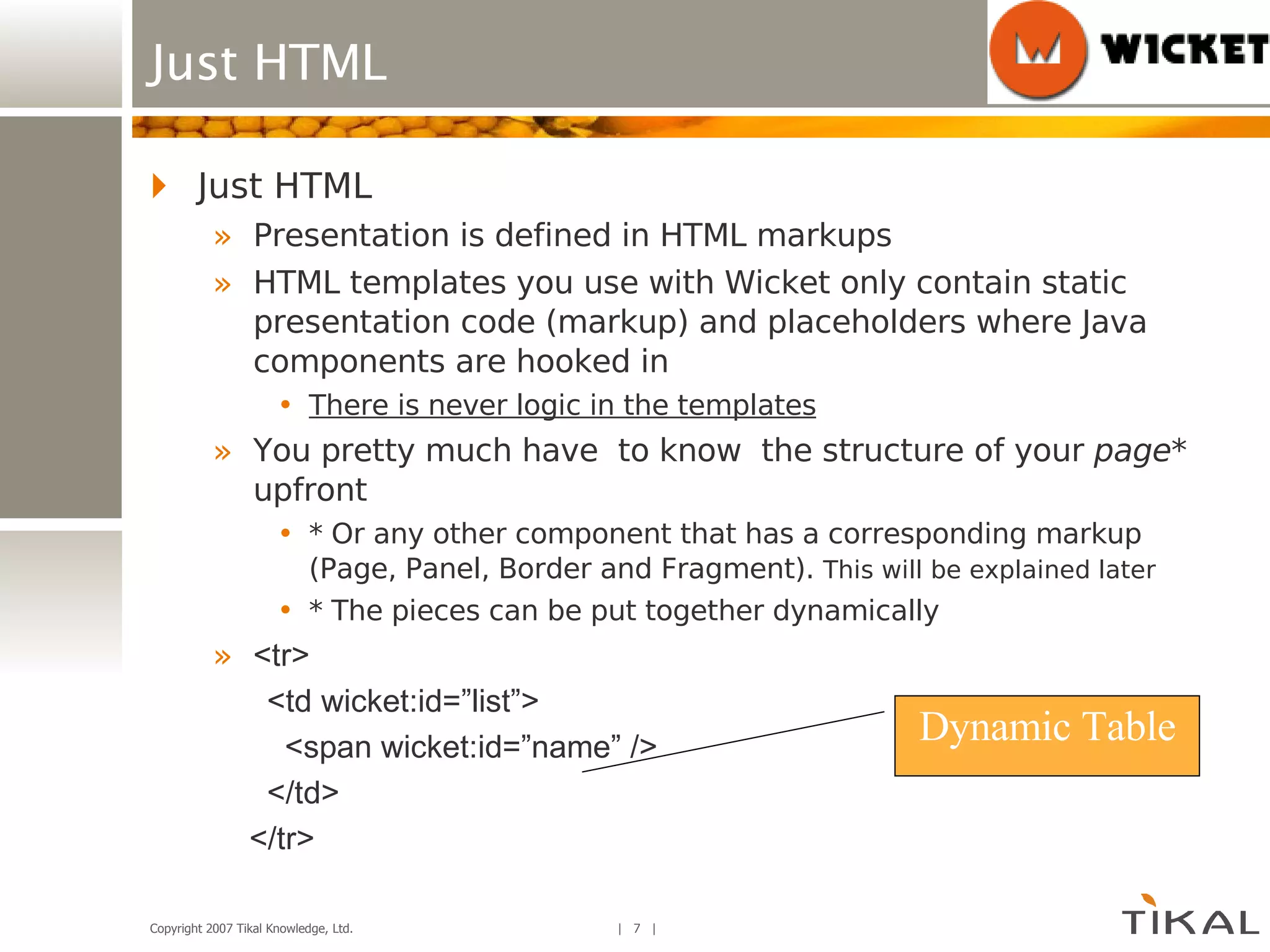
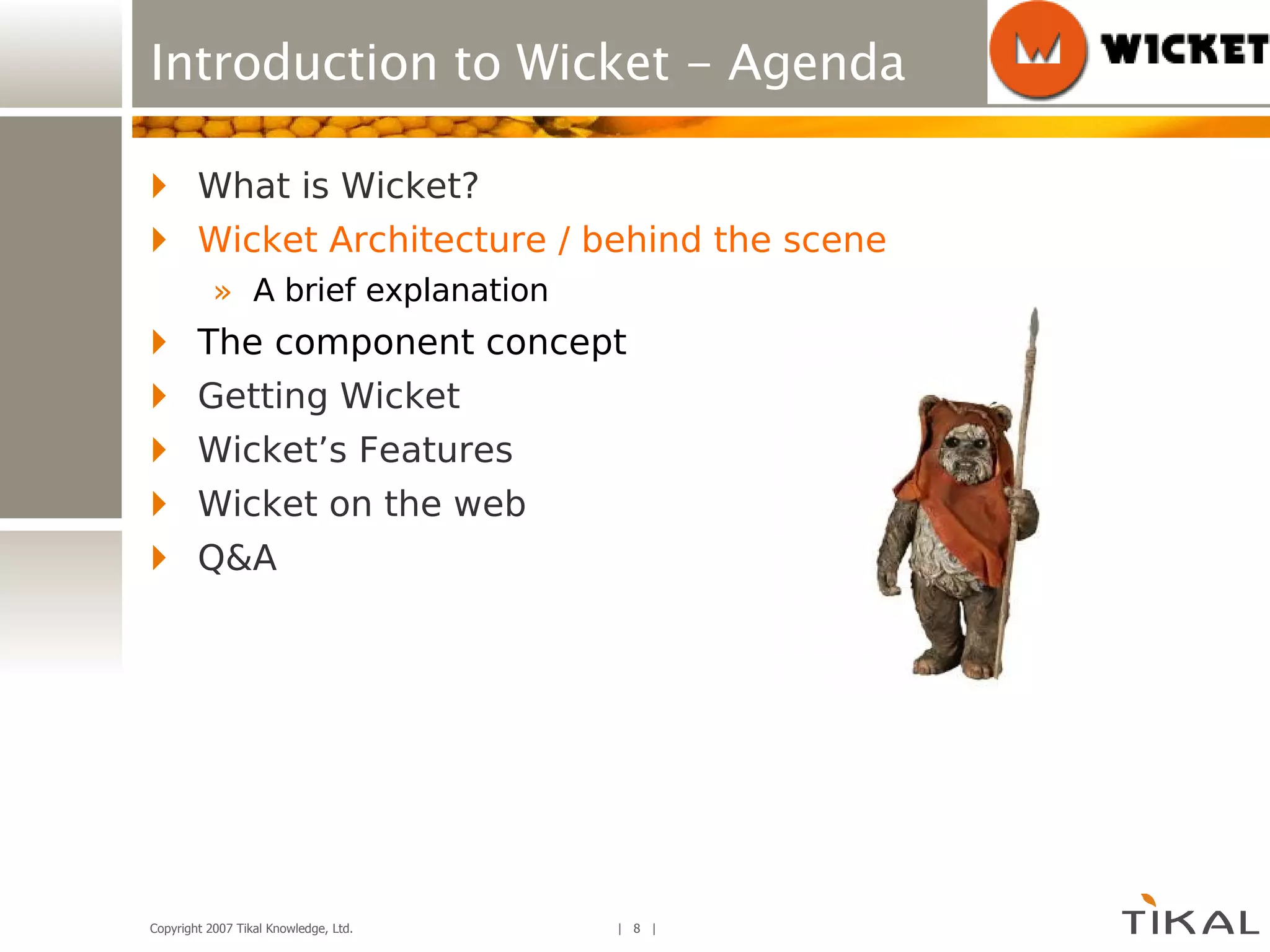
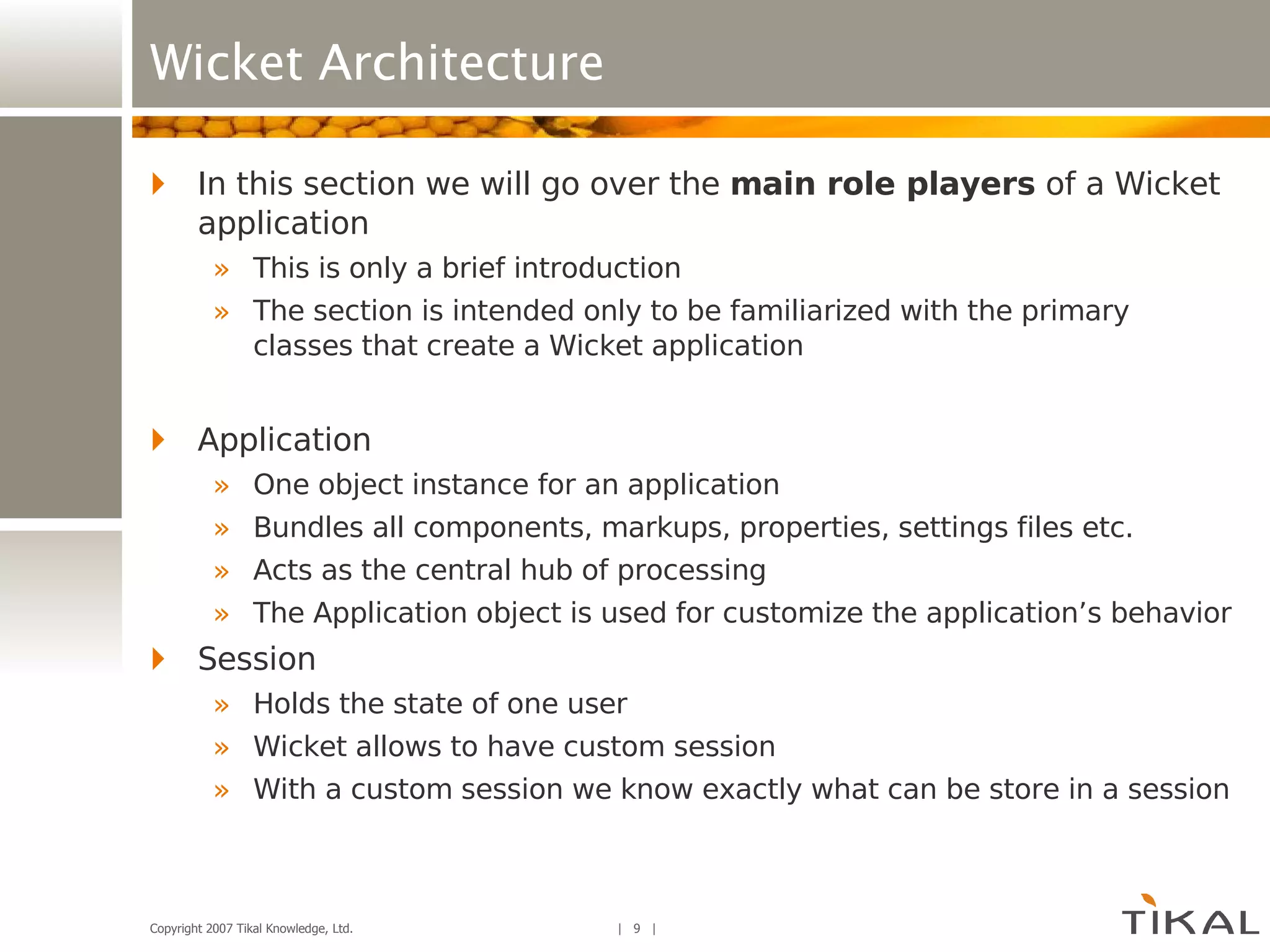
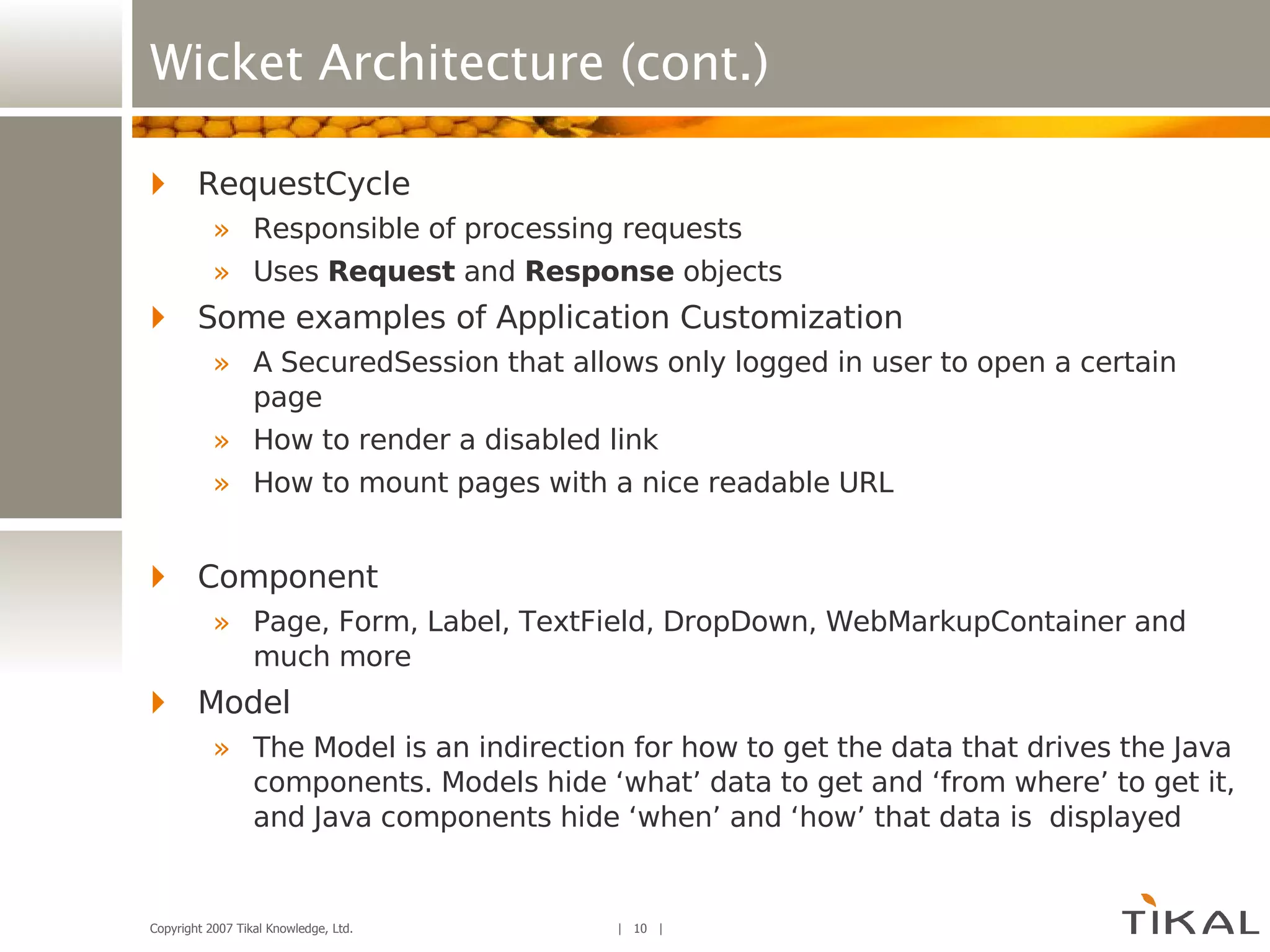
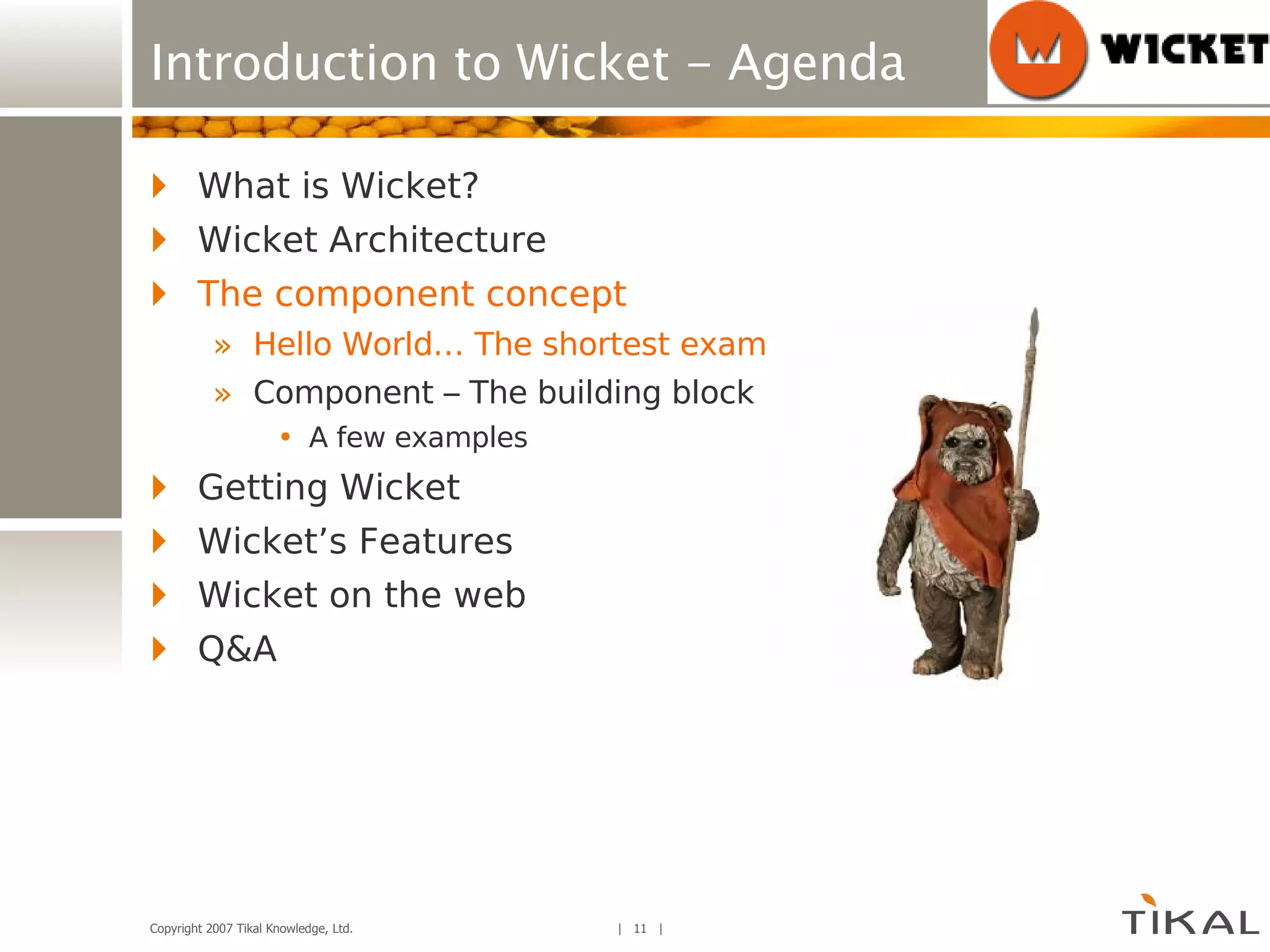
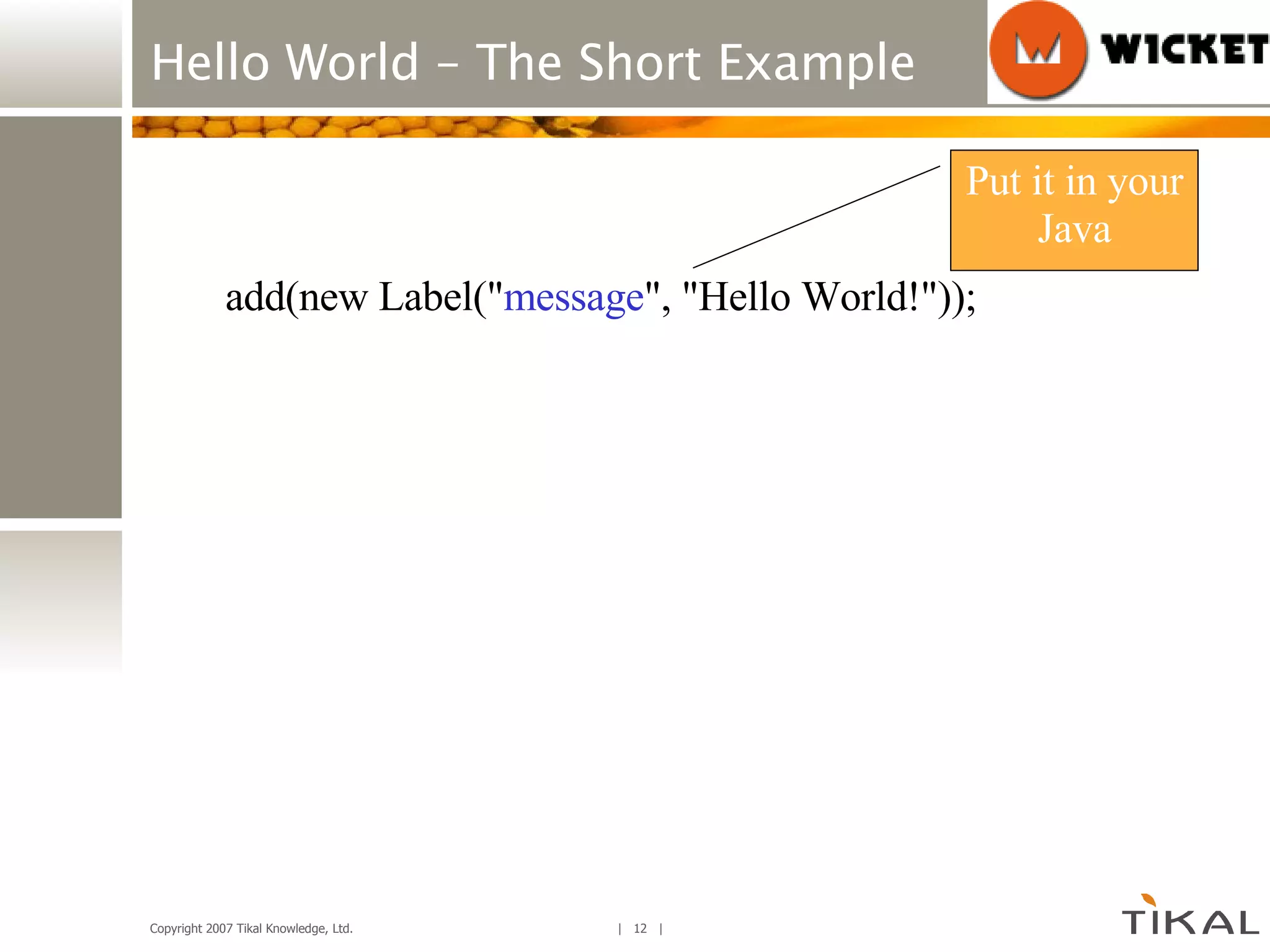
![Hello World – The Short Example <h1 wicket:id=“ message ”>[text goes here]</h1> add(new Label(" message ", "Hello World!")); + Add it to your HTML Put it in your Java](https://image.slidesharecdn.com/wicketintroduction-1214826136146339-9/75/Wicket-Introduction-13-2048.jpg)
![Hello World – The Short Example <h1 wicket:id=“ message ”>[text goes here]</h1> add(new Label(" message ", "Hello World!")); <h1>Hello World!</h1> + = Add it to your HTML Put it in your Java Et Voila](https://image.slidesharecdn.com/wicketintroduction-1214826136146339-9/75/Wicket-Introduction-14-2048.jpg)
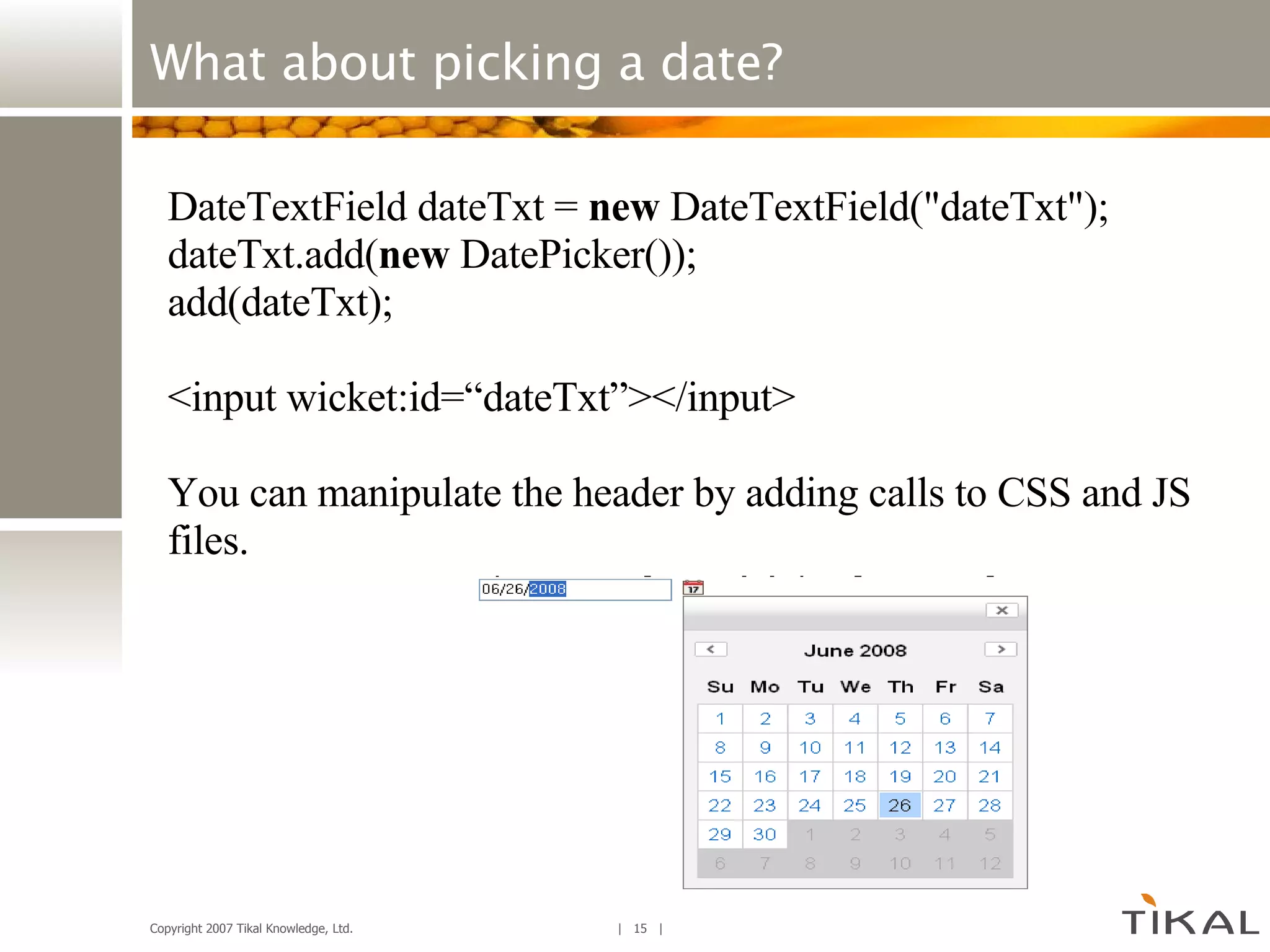
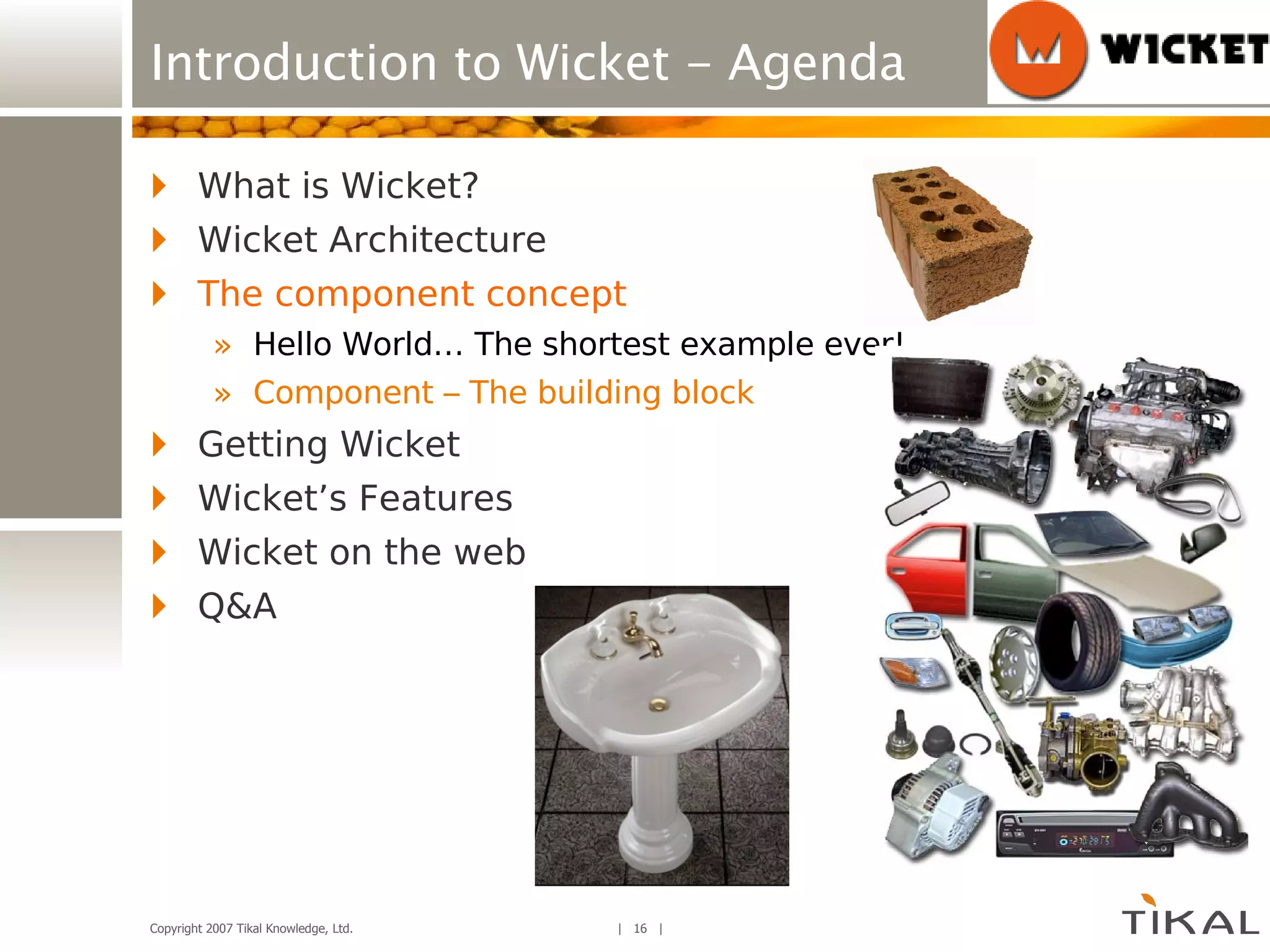
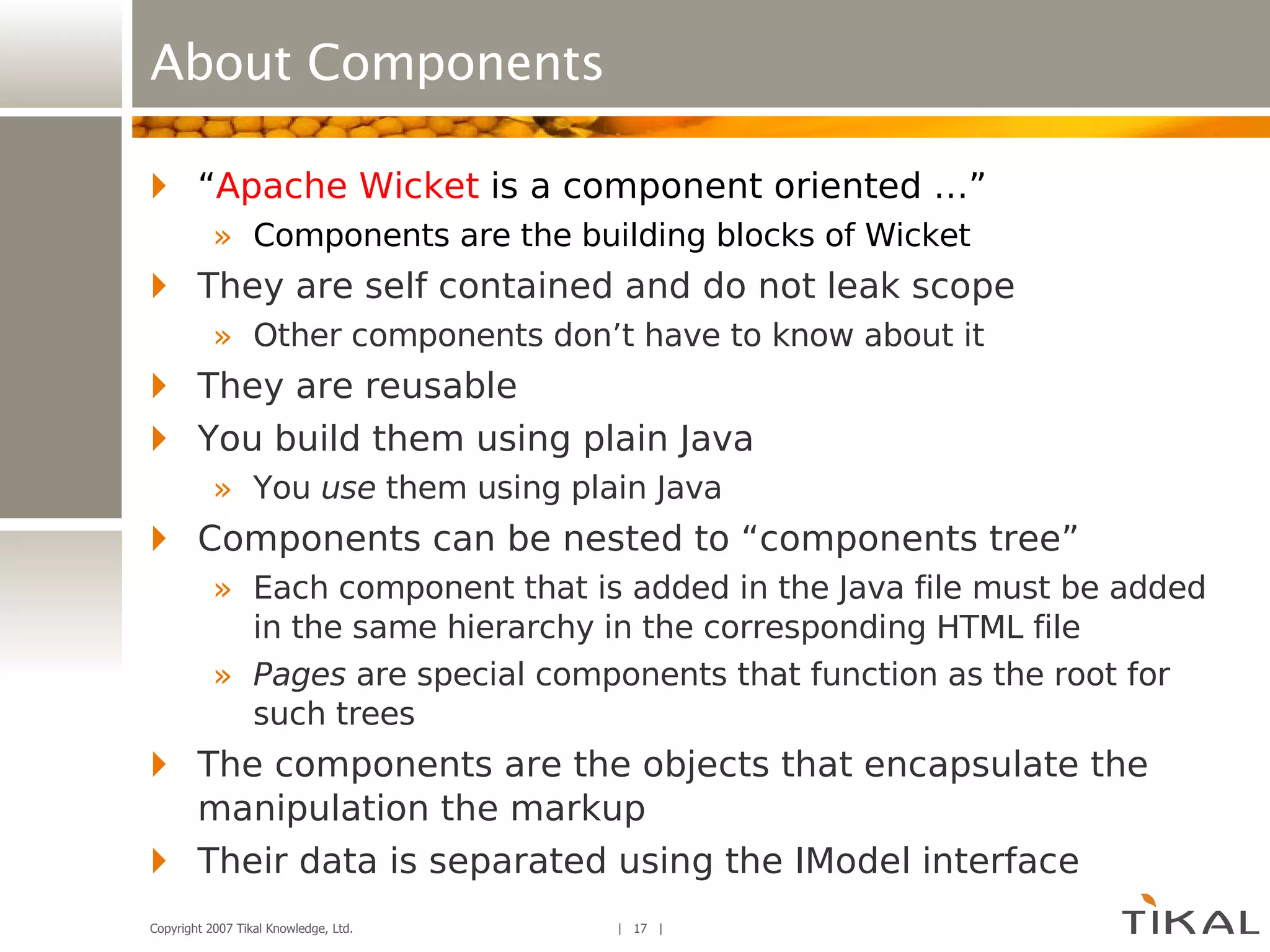
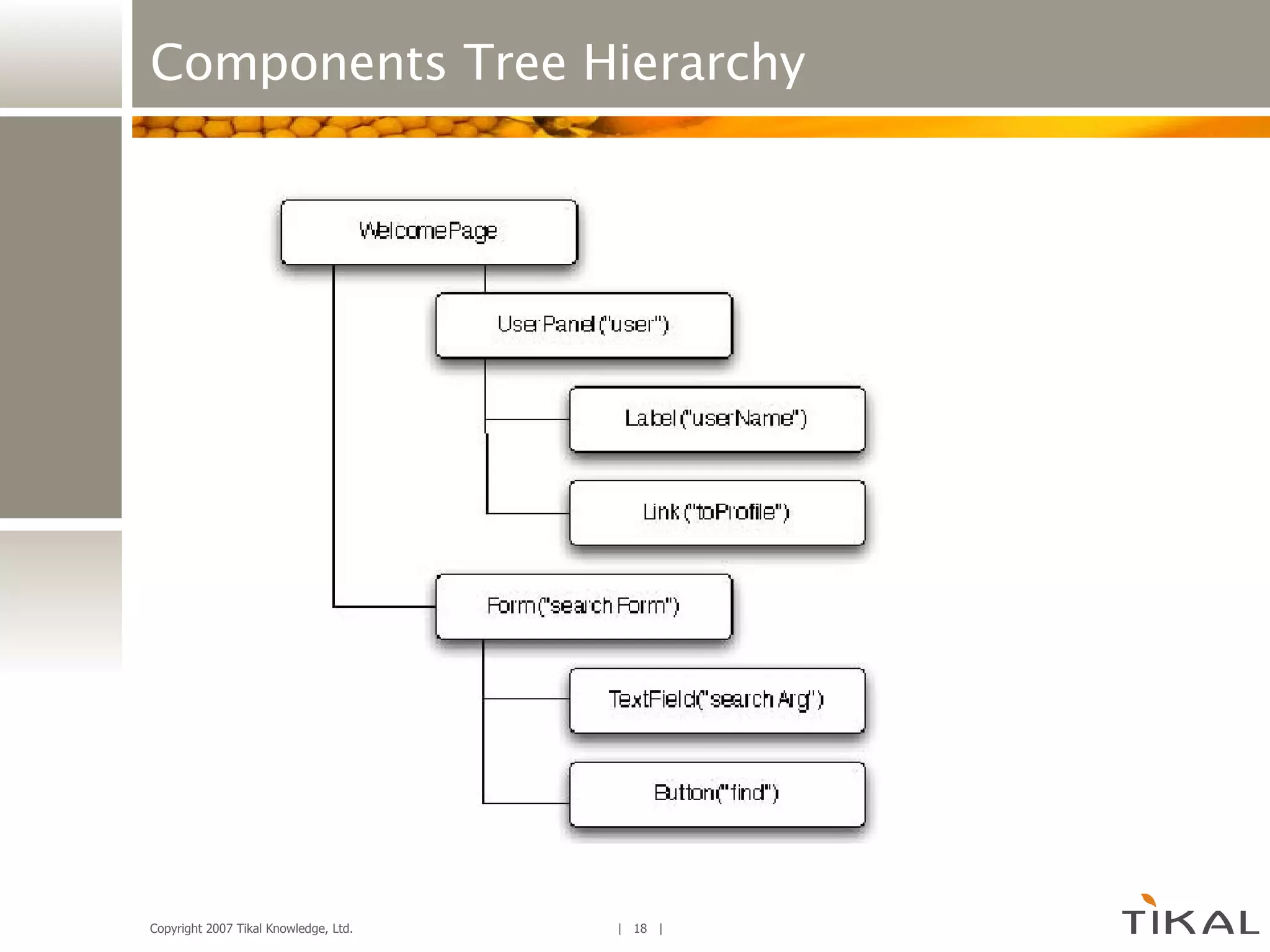
![Component + Markup Component has wicket id Markup has the same wicket:id Hierarchy must much HTML Code Java Code Link link = new Link(“ link ”) {…} add(link); link .add(new Label(" message ", “My Message")); <a href=”#” wicket:id=“ link ”> <span wicket:id=“ message ”>[text replaced]</span> </a>](https://image.slidesharecdn.com/wicketintroduction-1214826136146339-9/75/Wicket-Introduction-19-2048.jpg)
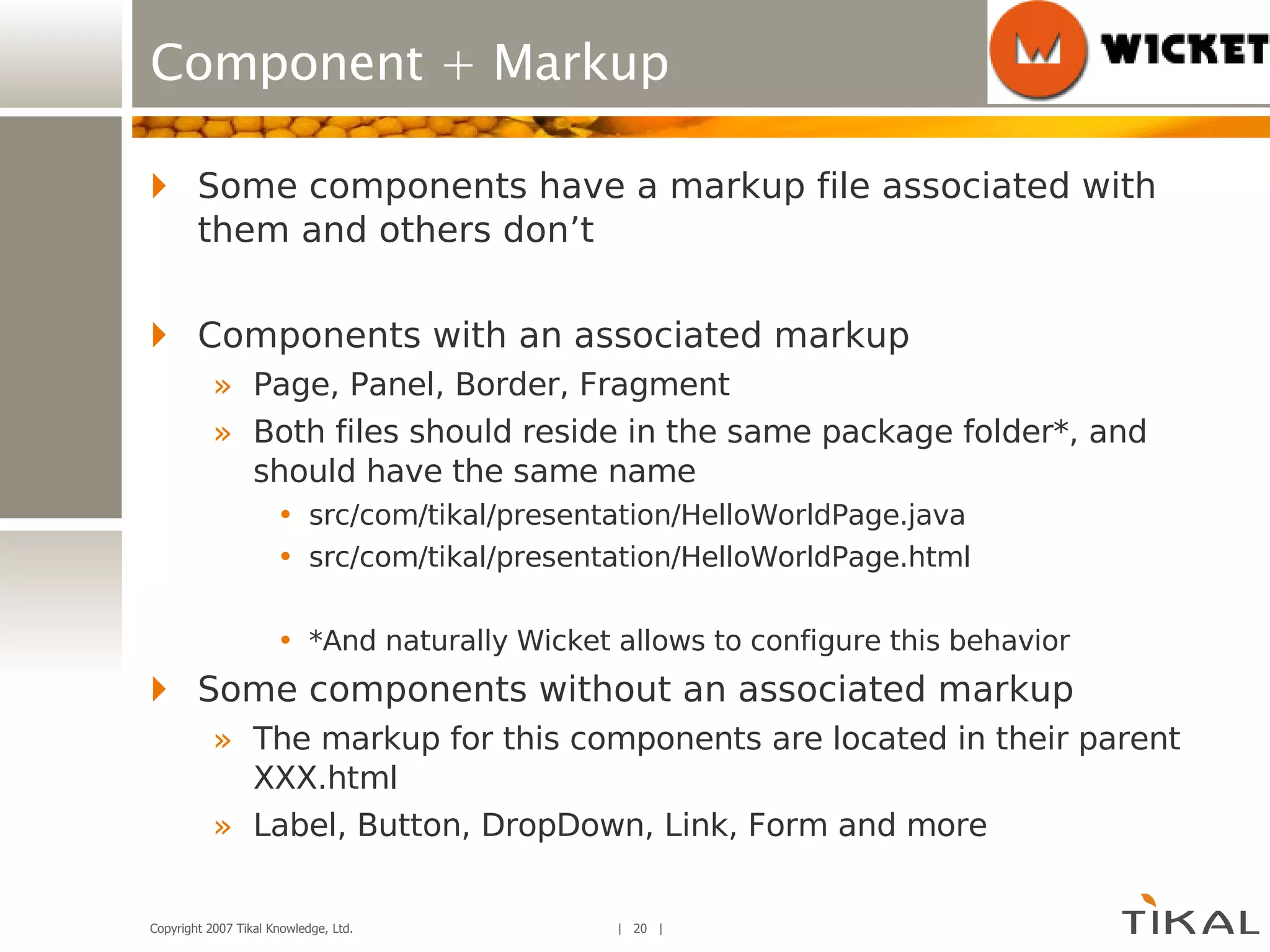
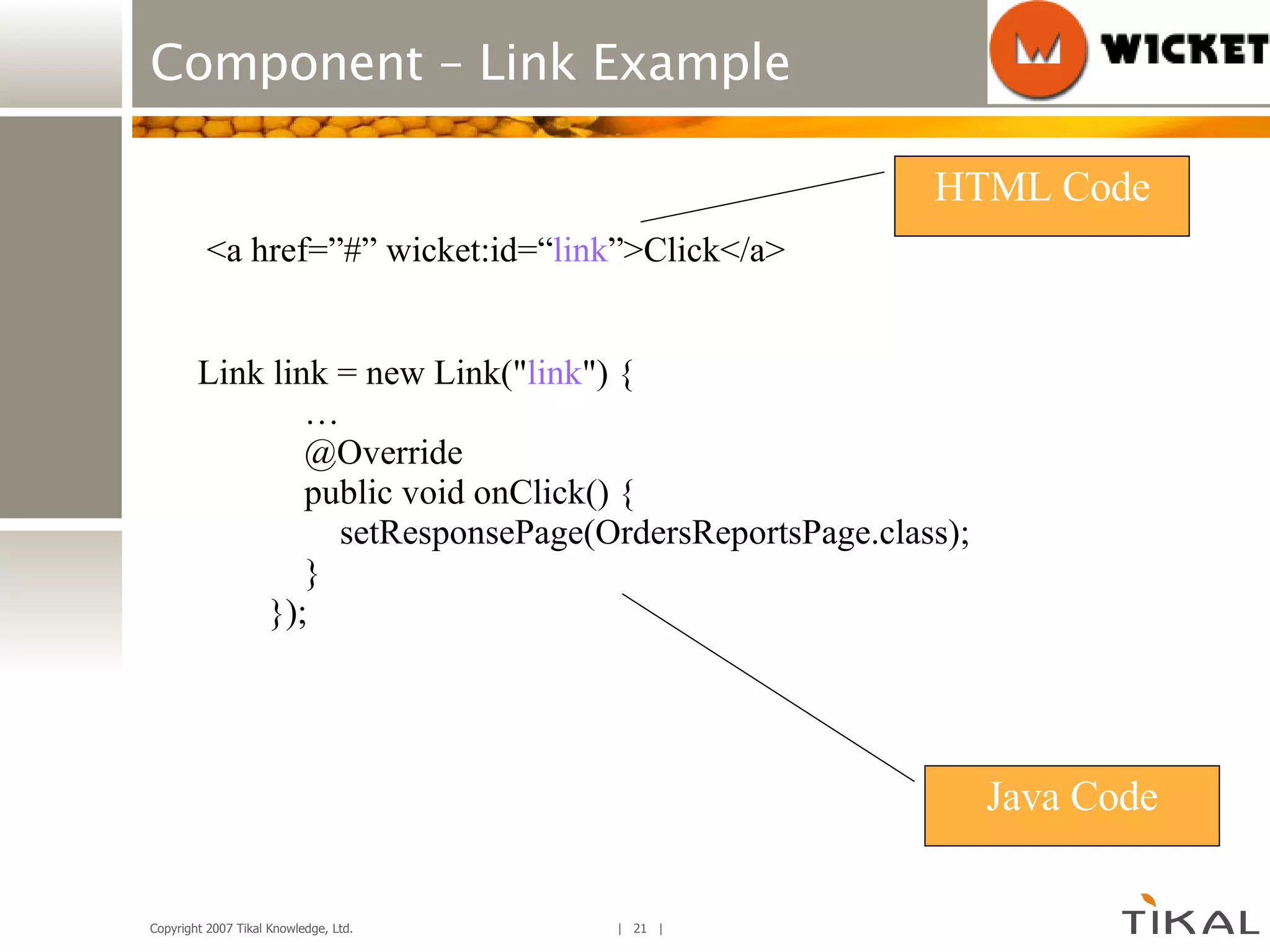

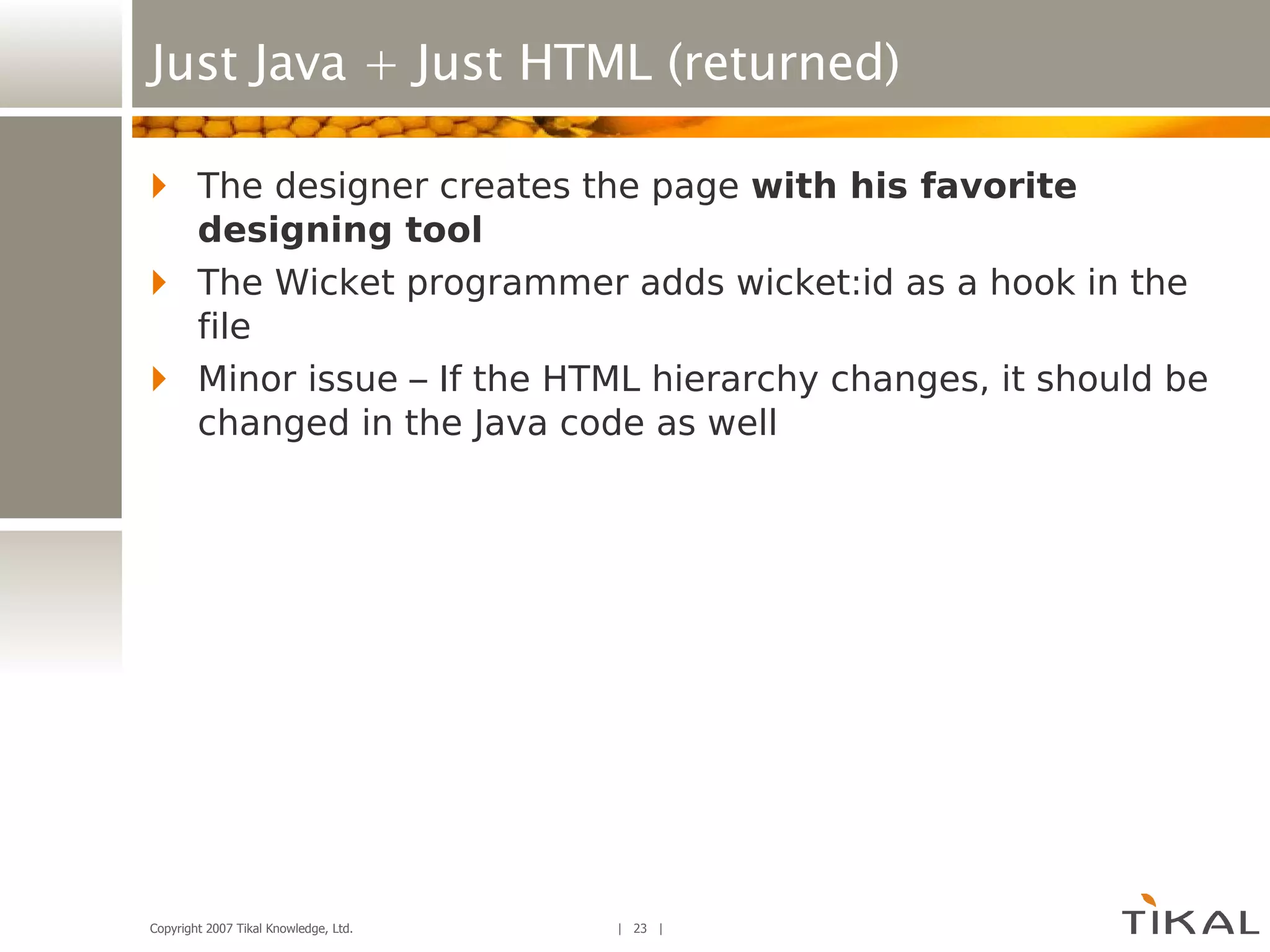
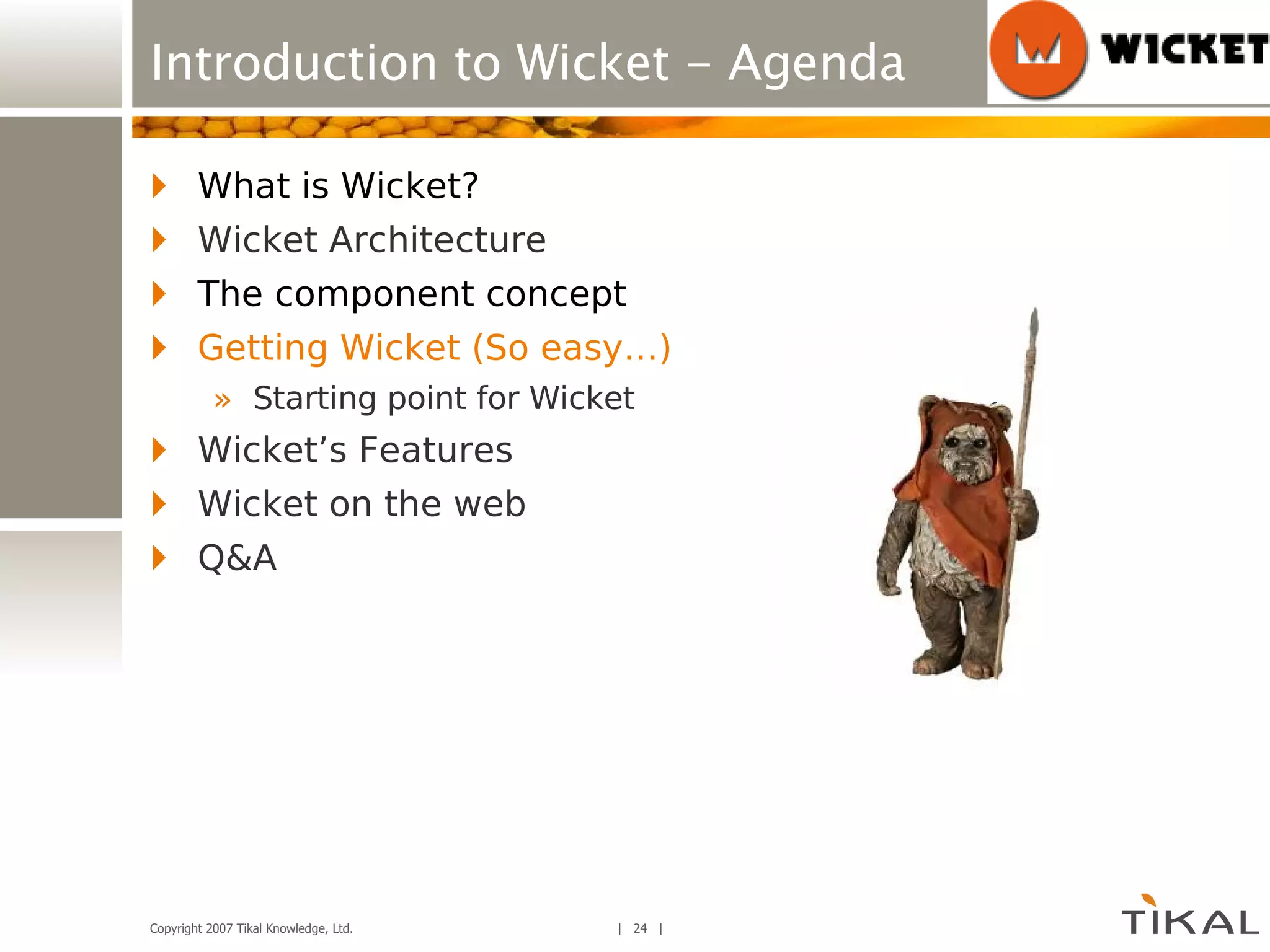
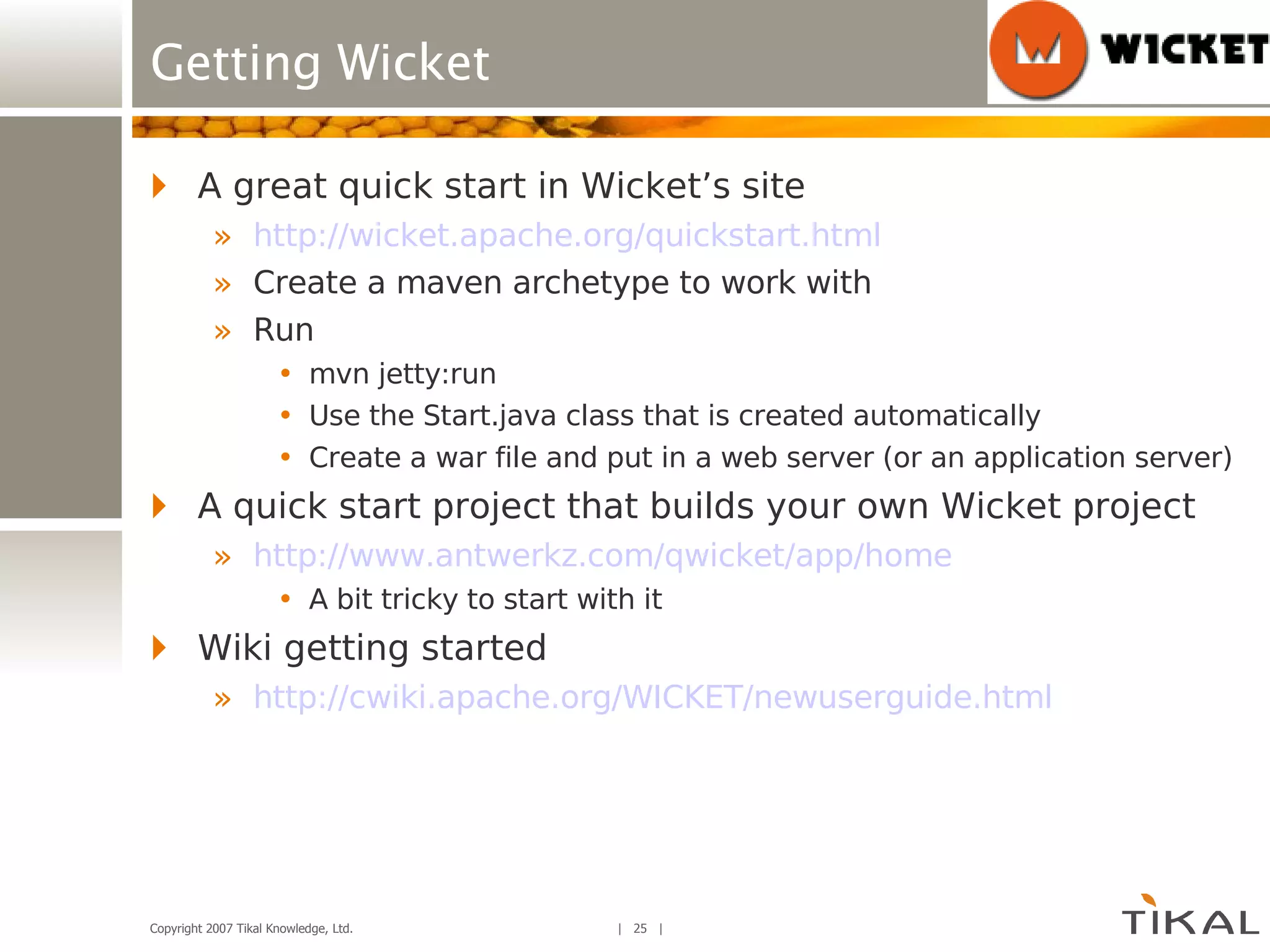
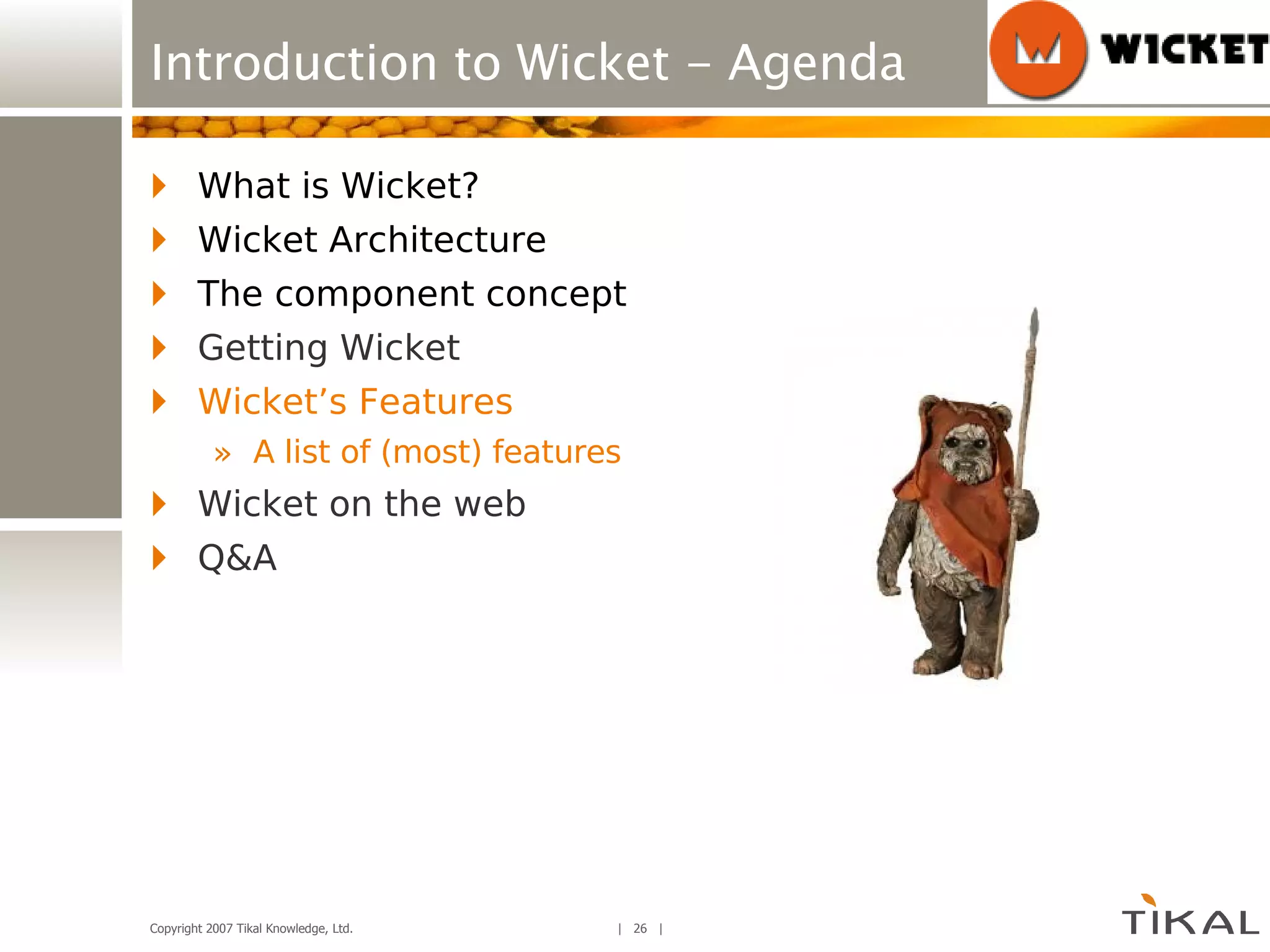

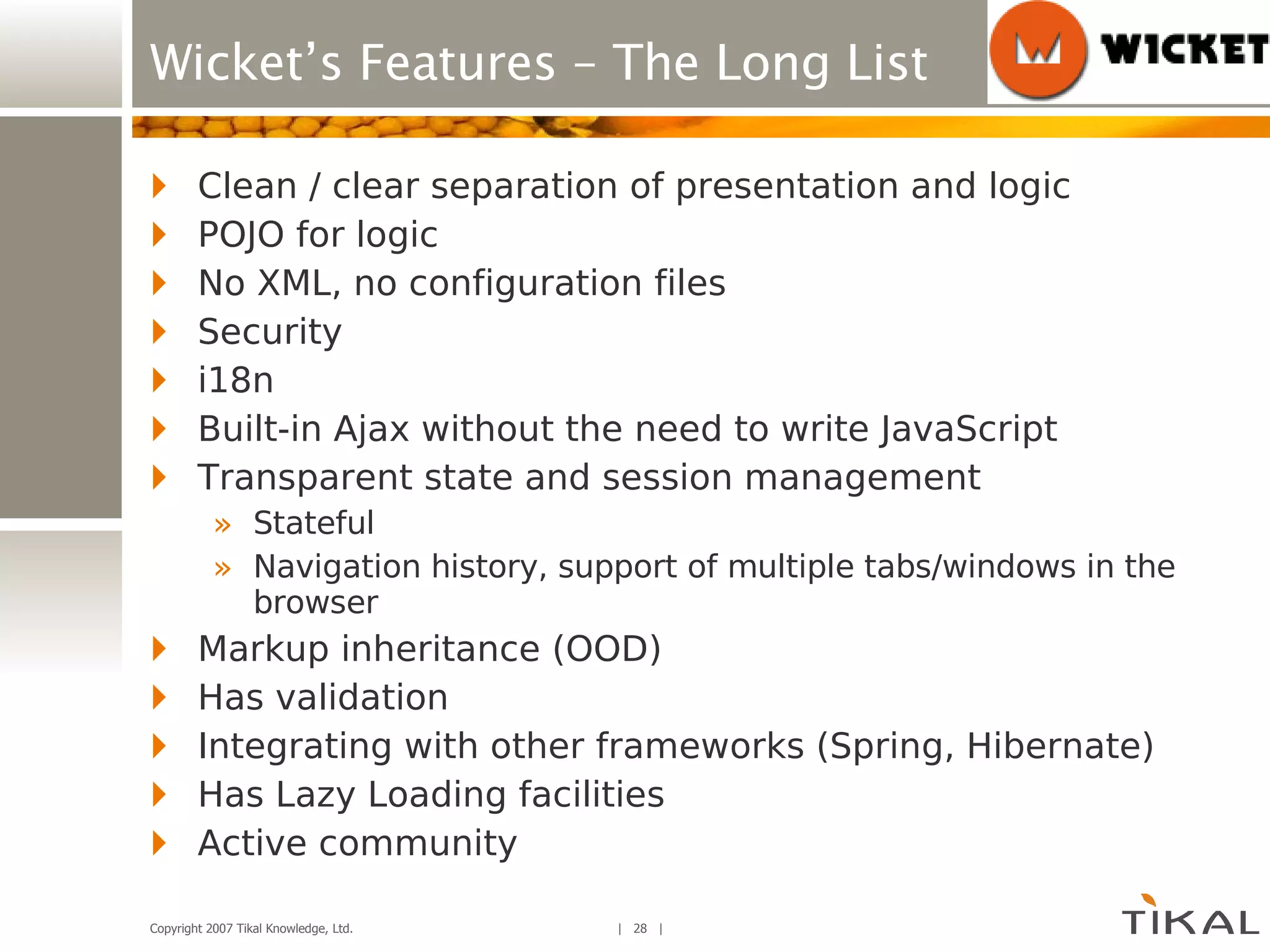
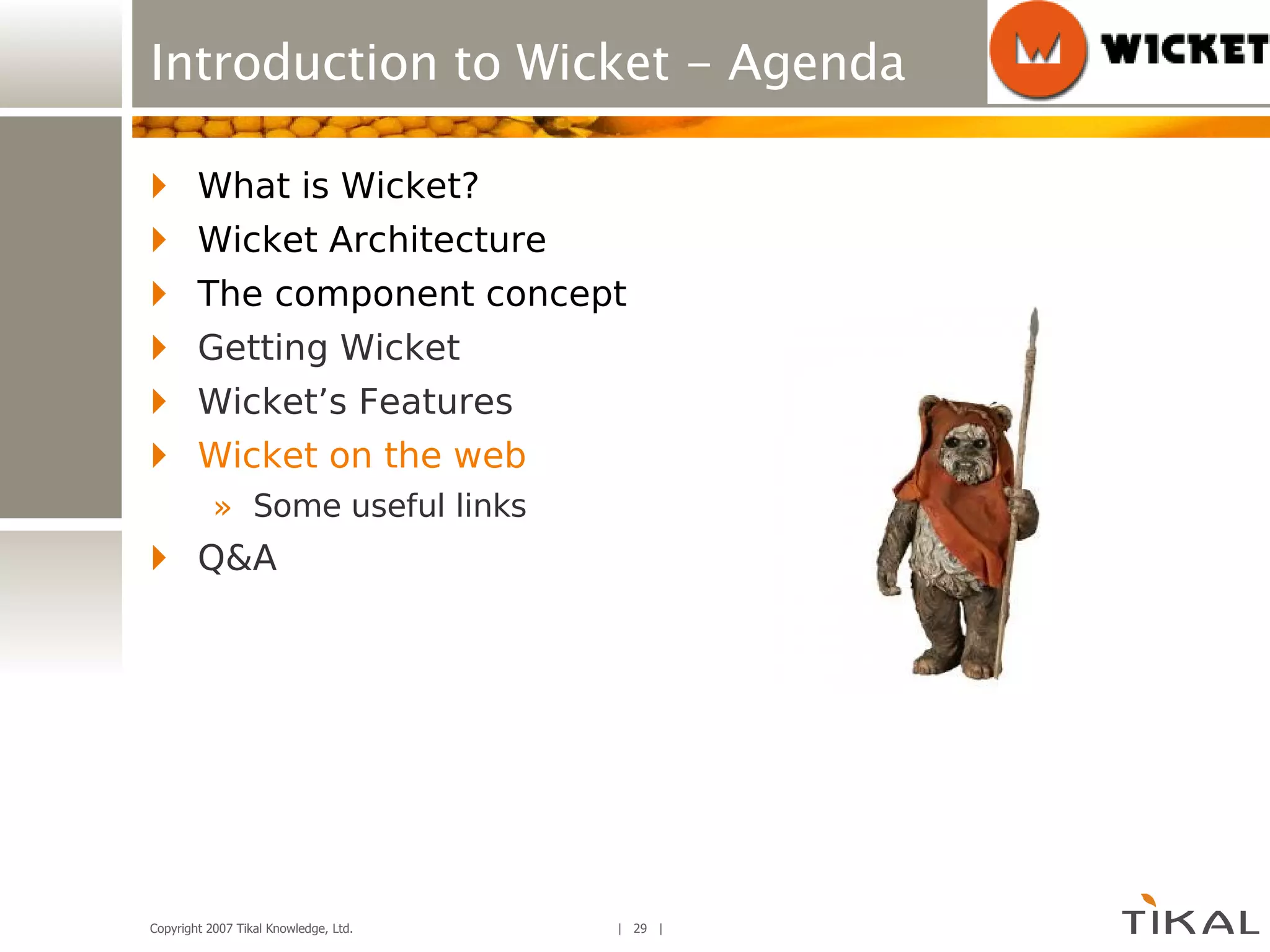
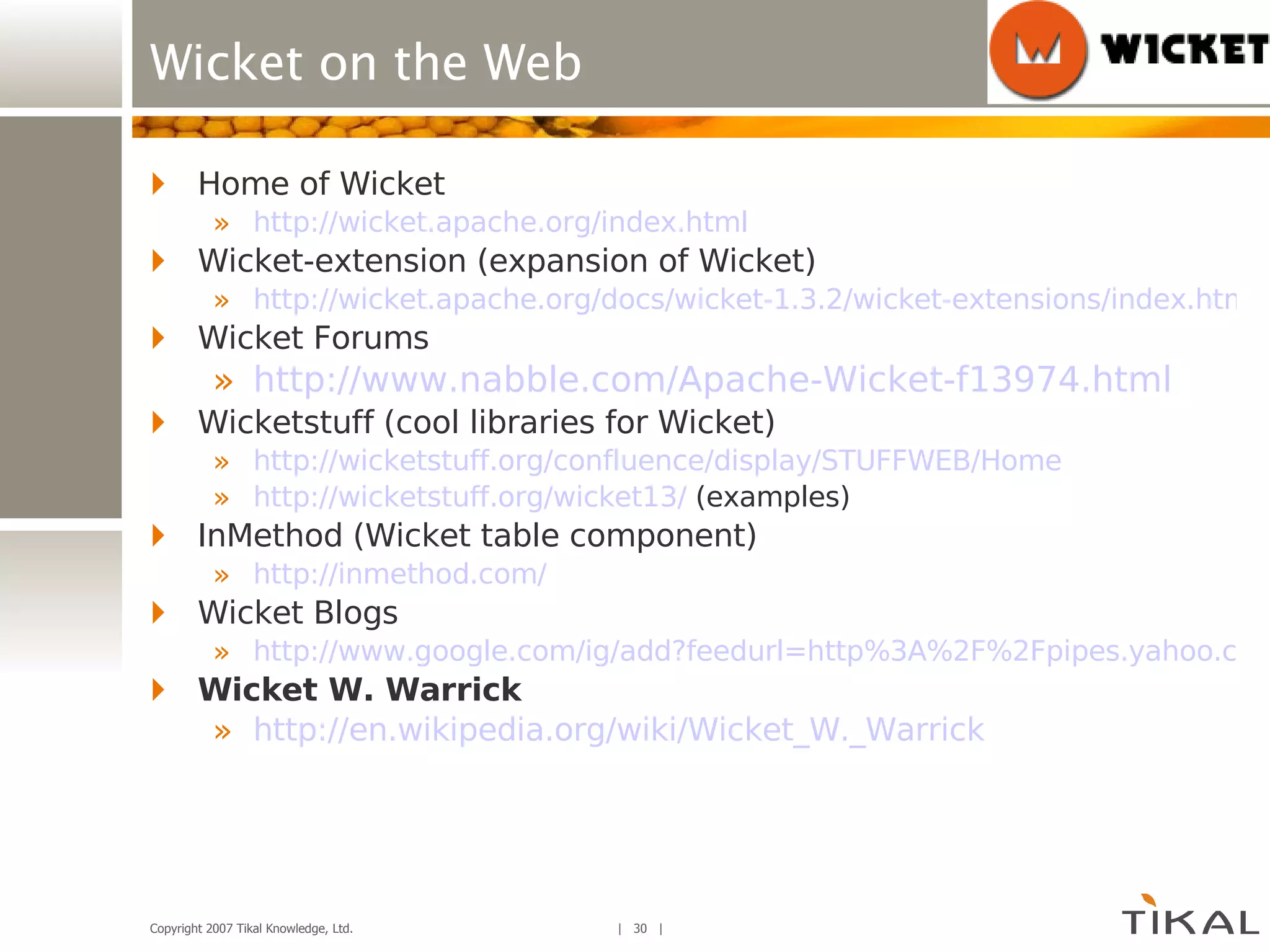
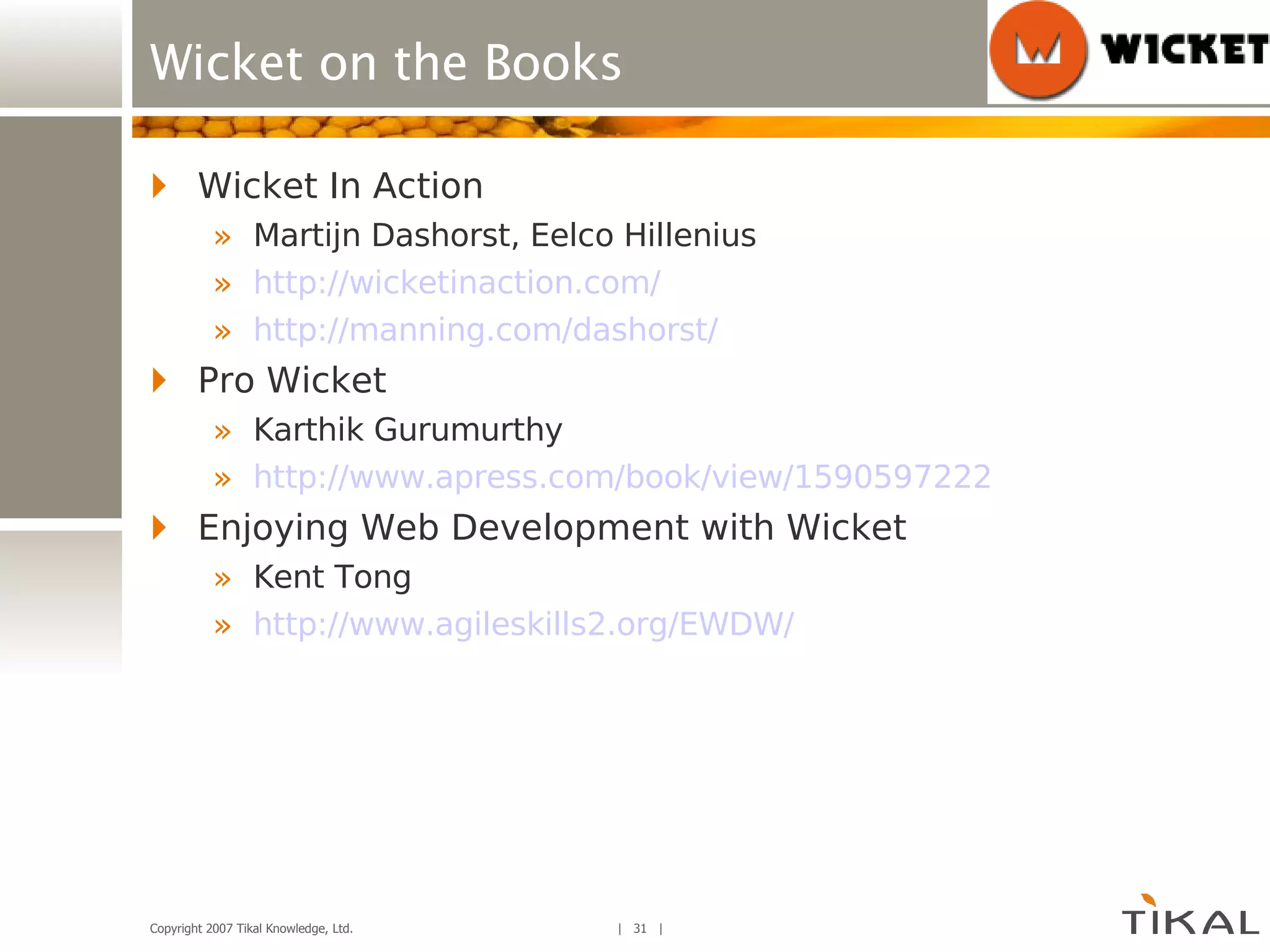

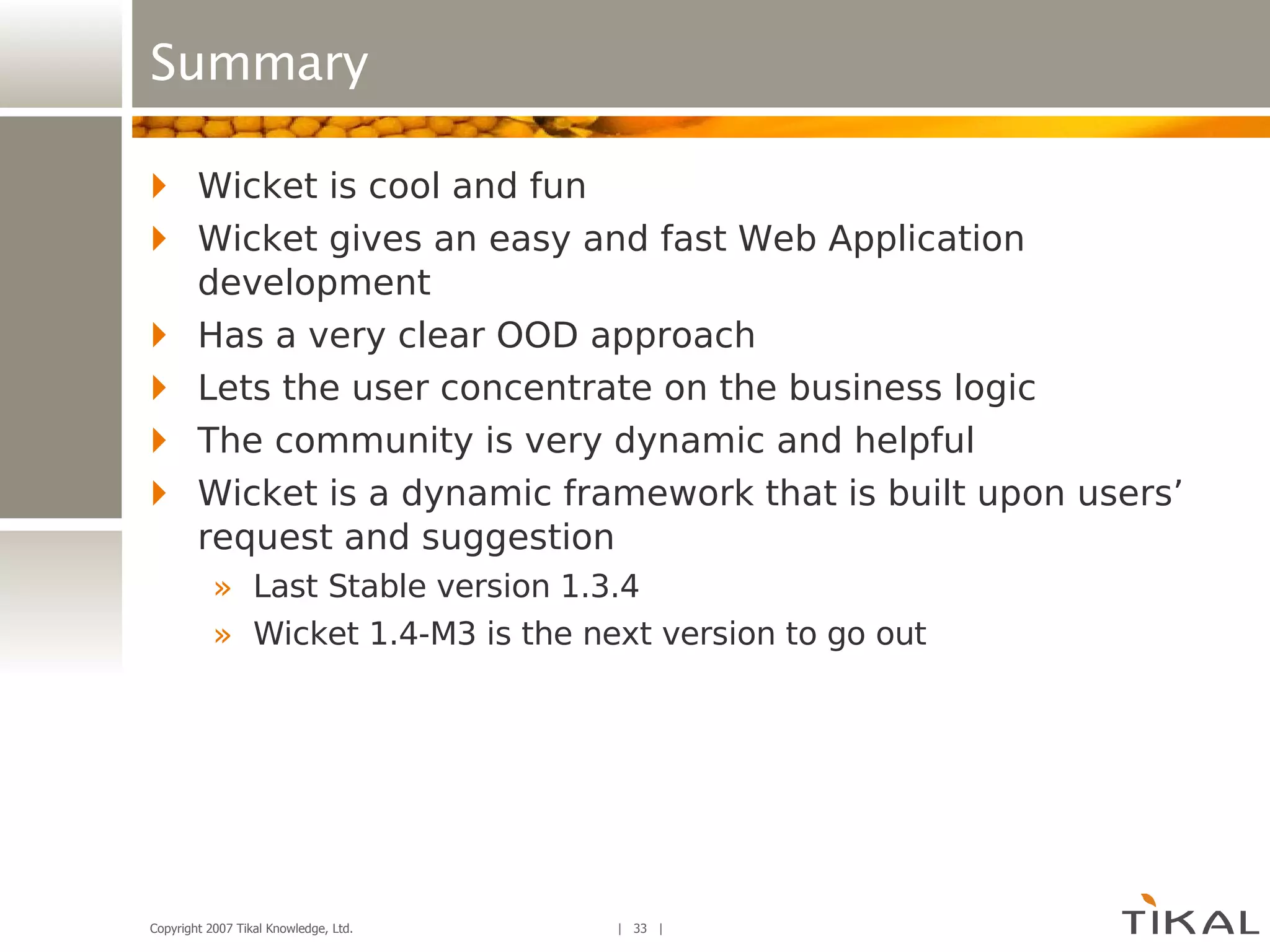
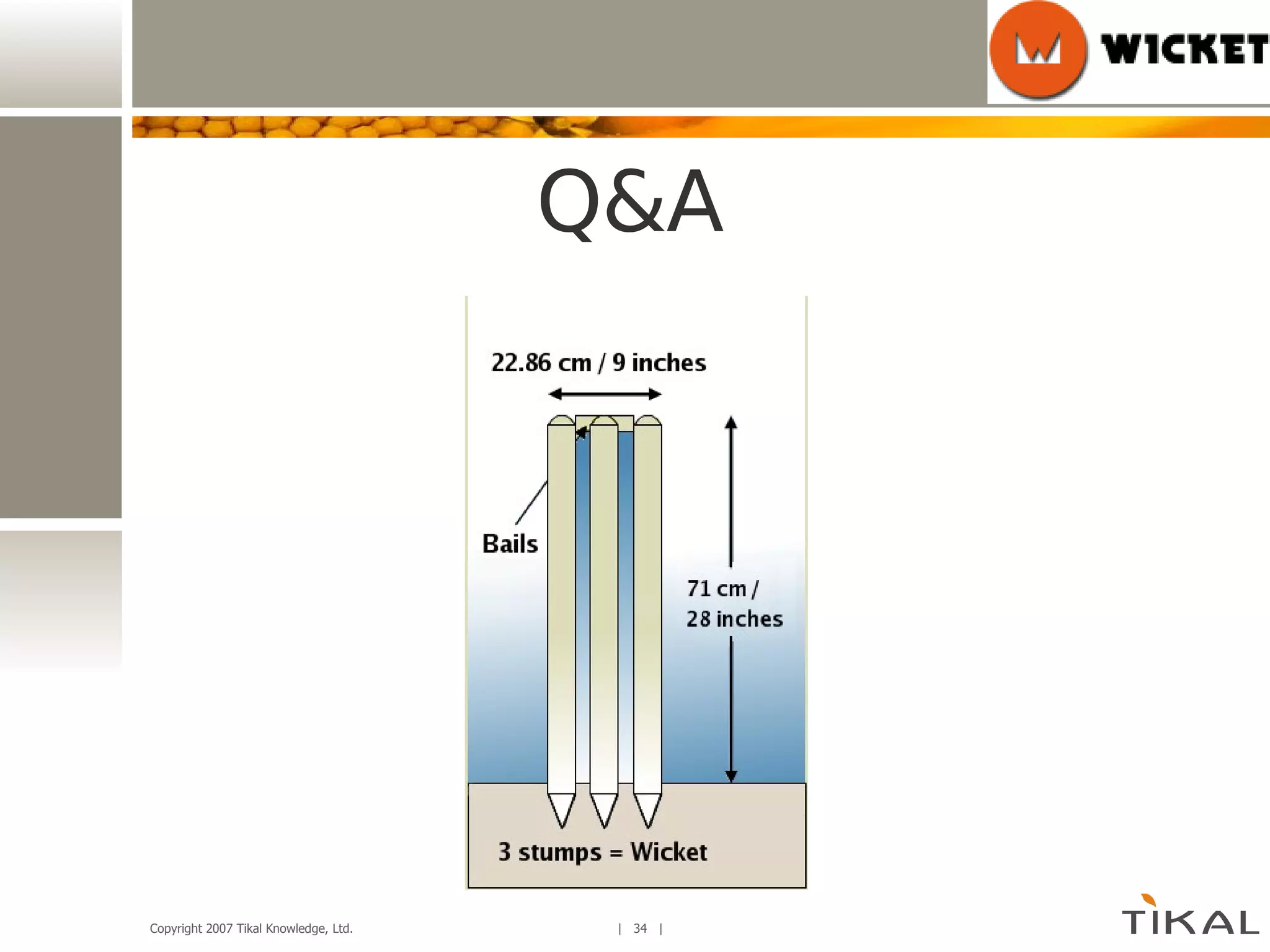
![Thank You [email_address] [email_address]](https://image.slidesharecdn.com/wicketintroduction-1214826136146339-9/75/Wicket-Introduction-35-2048.jpg)